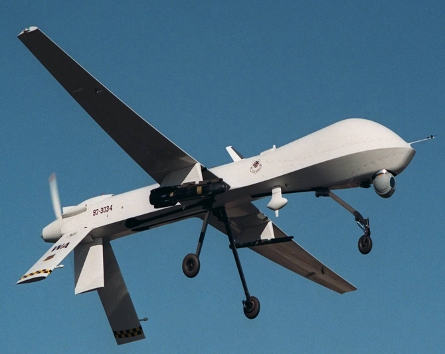The US military has decided to arm unmanned air vehicles already flying two constant surveillance patrols over Libya.
President Barack Obama on 20 April authorised the US Air Force to weaponise two combat air patrols of “Predator” UAVs, says Gen James Cartwright, vice chairman of the joint chiefs of staff.
It was not immediately clear if Cartwright was referring to the MQ-1 Predator or the MQ-9 Reaper – both manufactured by General Atomics Aeronautical Systems. However, officials later confirmed that the decision relates to the use of the smaller MQ-1, which typically carries two Lockheed Martin AGM-114 Hellfire air-to-surface missiles.
 |
|---|
© US Air Force |
“What they will bring that is unique to the conflict is their ability to get down lower, therefore to be able to get better visibility on particularly targets now that have started to dig themselves in into defensive positions,” Cartwright says.
“They're uniquely suited for areas - urban areas where you can get collateral damage. And so we're trying to manage that collateral damage obviously, but that's the best platform to do that with,” he says.
But the USAF was forced to abort the first mission by armed UAVs on 21 April due to bad weather, Cartwright says.
Until now, the USAF had not publicised the deployment of two Predator combat air patrols over Libya for intelligence, surveillance and reconnaissance missions.
The only UAV acknowledged by the USAF to have participated in the Libyan conflict was a Northrop Grumman RQ-4 Global Hawk, flying missions out of Sigonella air base, Sicily.
Secretary of Defense Robert Gates told reporters that the Predators involved in the Libya operations are not based physically in Afghanistan, but he did not explain where the Predator flights originated.
NATO on 1 April assumed control of Operation Unified Protector to enforce UN Security Council Resolution 1973, which authorised force to prevent Libyan leader Col Muammar Gaddafi from attacking rebel troops.
Source: FlightGlobal.com
















